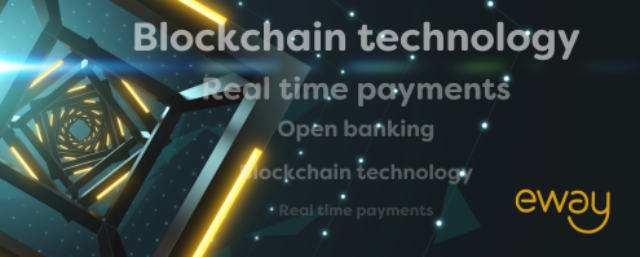A payment gateway is like an online cash register that helps businesses accept credit cards, debit cards, and other forms of digital payment methods. Whether you sell in-store and online, or exclusively online — a payment gateway facilitates secure payments for both scenarios.
This article explores the payment gateway essentials; what it is, how it works, why you need it, and some tips on choosing the right one for your business.
Definition: What is a payment gateway?
A payment gateway is an electronic payment processing service for merchants that processes transactions online and in-store.
In physical stores: An example of a payment gateway in action would be a point of sale (POS) terminal used to accept credit card information by card or via a digital wallet.
In online stores: A payment gateway operates as the ‘checkout’ gatekeeper where customers enter their credit card information and other payment details to make a purchase.
Leading payment gateways also do the following:
- Encrypt data between the customer’s browser and your server
- Send requests to credit card providers and financial institutions to authorise payments
- Enable ecommerce checkouts to proceed to the next step
- Screen orders to detect fraud and other malicious behaviour
- Use geolocation services to execute location-based actions
Pro tip: Payment processors and payment gateways are two terms often used interchangeably. This isn’t entirely accurate – and here’s why:
- Payment processors transmit payment data, e.g., sending credit card numbers to an issuing bank.
- Payment gateways do the above, plus authorise the fund transfer between the customer and merchant.
Process: How does a payment gateway work?
Before we tell you how a payment gateway works, let’s meet the characters of the payment process.
The key players in electronic payments are as follows:
- Customer – the person buying your product or service
- Merchant – the person (you) or business that sells products or services
- Issuing bank – the bank that issued the customer’s credit or debit card
- Acquirer – where the transferred funds will end up, usually the merchant’s (your) bank
Now, let’s say a customer purchases from your ecommerce site. Your payment gateway then works through the following steps:
- Sends the transaction details to the acquirer;
- Identifies the customer’s card network (for example, MasterCard);
- Transmits the payment information to the correct issuing bank.
Then, the issuing bank steps in and:
- Verifies the legitimacy of the transaction;
- Determines if the customer has enough money to make the purchase;
- Approves or denies the transaction and transmits this information through the card network and on to your payment gateway.
Finally, your payment gateway authorises the fund transfer.
Benefits: Why is a payment gateway important for my business?
Payments aren’t as simple as they used to be, and your business must adapt. A payment gateway can support the following:
- Integration with your ecommerce platform
- A broad spectrum of payment types (Visa, Mastercard, Amex, etc.)
- Subscriptions and recurring payments
The right payment gateway can enhance the overall performance of your business – but let’s get specific.
Better checkout experience
Firstly, businesses that deliver superior customer experience outperform competitors by almost 80%. A payment gateway makes your customers’ checkout experience fuss-free, encouraging repeat purchases and raising your bottom line.
Secondly, more than half of shoppers will abandon their cart if the checkout process is slow or complicated, and 80% of these shoppers won’t return. A payment gateway supports impulse purchases by streamlining the payment process and allowing super-speedy checkouts.
Improves online payment security
Lastly, the Australian Cyber Security Centre responds to one threat every 10 minutes. A payment gateway with in-built security defences is one of the most powerful tools in your cybercrime-fighting arsenal.
Improving payment security isn’t just about protecting your business’ and customer’s data – it’s about meeting your compliance obligations (including the Payment Card Industry Data Security Standards or PCI-DSS requirements) and giving shoppers peace of mind. According to Experian’s 2021 Global Insights Report, 55% of consumers believe security is the most critical factor in their digital experience.
Read more: How to keep your customers’ information secure when taking payments online
Challenge: How do I choose the right payment gateway?
Not all payment gateways are created equally. If you want to provide the best possible customer experience, meet your compliance obligations, and protect your business against the rising threat of cybercrime, you need to do your homework.
Big picture, there are five key questions you should consider before deciding:
- How much do you want to spend?
- How secure is the payment gateway?
- What integrations does the payment gateway have?
- What level of support does the payment gateway provide?
- How many online payment types can you accept using the payment gateway?
How much do you want to spend?
The payments industry is always changing, and it pays to shop around. Consider all of the different plans available, and what will suit your business’ fee structure best. Some payment gateways offer flat transaction fees, while others offer percentages that vary based on the transaction cost.
How secure is the payment gateway?
An important aspect of accepting payments online is the security and protecting your customers’ information. Make sure the payment gateway holds the highest level of payment security; Payment Card Industry Data Security Standards (PCI DSS) level 1. This means the payment gateway secures all customer and credit card data with the highest level of encryption available.
What integrations does the payment gateway have?
There is no one-size-fits-all solution to payments and selecting the right option for your business means factoring in the types of functionalities you need. Think web design, integrated shopping carts, and accounting software.
What level of support does the payment gateway provide?
When an issue arises, you need it resolved fast. Your revenue and reputation depend on it. Pay close attention to the quality of customer support you experience from day one, as this is often a realistic indication of the level of attention you can expect long term.
How many online payment types can you accept using the payment gateway?
Beyond credit and debit cards, consider what other payment methods you want to accept online such as digital wallets or subscription payments.
Read more: What is the best online payments gateway in Australia?
Finding the right payment gateway for your business
Now that you understand the fundamentals of how a payment gateway works — it’s not a question of whether you need a payment gateway, it’s which is the best one for your business.
Find out more about Eway’s payment gateway and how we tailor our services to suit your needs by talking to one of our payment experts today.


Subscribe to updates
Get the latest news and payment insights from Eway hot off the press.



